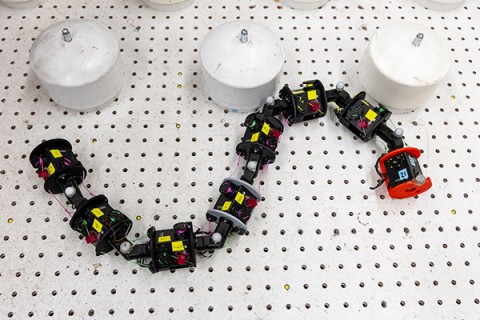
Worms and snakes seem to wiggle their way across varying environments without needing to learn the terrain. In more complex landscapes, they move even faster, using obstacles to propel themselves forward like a person pulling themselves up a ladder.
“They don’t alter their body-bending pattern no matter how dense the obstacles are,” said Tianyu Wang, a robotics Ph.D. student in the Institute for Robotics and Intelligent Machines and the George W. Woodruff School of Mechanical Engineering. “We were curious if this process was passively controlled, meaning they don’t have to ‘think’ about how to deal with obstacles — we consider this a kind of ‘mechanical intelligence.’”
To determine if this passive control hypothesis was correct, a team of roboticists, physicists, and engineers led by Daniel Goldman, the Dunn Family Professor in the School of Physics, and Hang Lu, professor and Cecil J. “Pete” Silas Chair in the School of Chemical and Biomolecular Engineering, developed a limbless robot. This robot helped them better understand the biology that makes worms and snakes so agile. The result is a robot that could be vital for missions in which humans and wheeled robots are limited, such as search and rescue, industrial maintenance, and planetary exploration.
Read more about what they discovered at Georgia Tech Research News.
Tess Malone, Senior Research Writer/Editor
